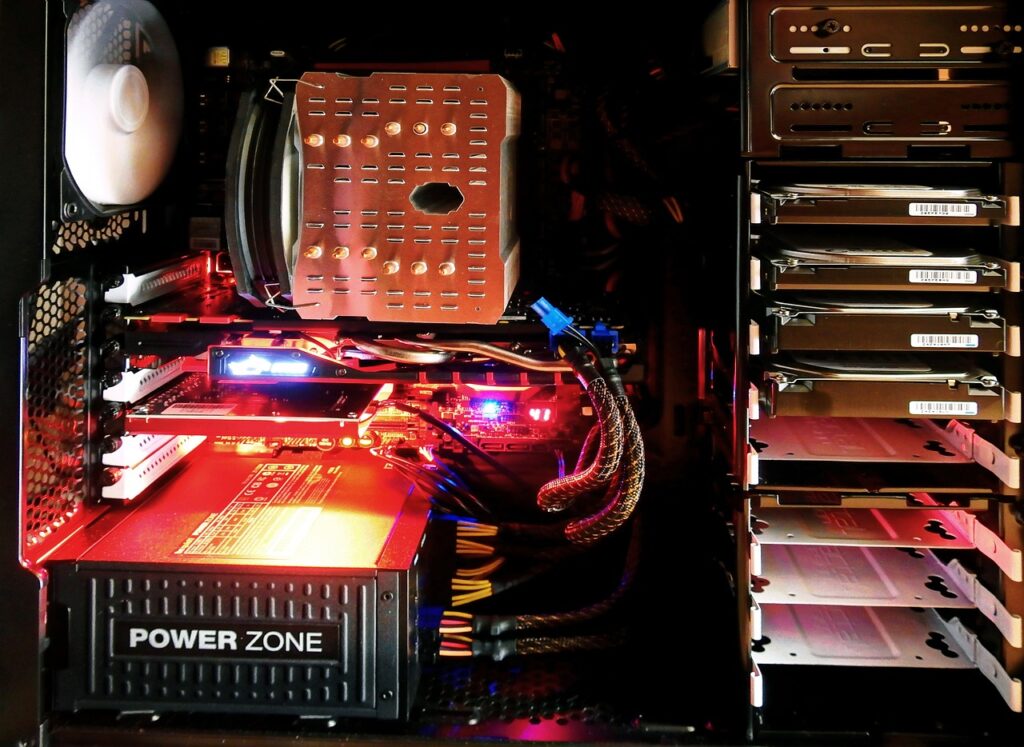In the modern era, the computer is a fundamental need for everyone, and its presence has become vital. We require it in our daily lives to make tasks and other activities less complicated. We depend on PCs for everything, from business to enjoyment. But have you ever wondered how a computer works?
A computer is a complex machine with many different components, each with an important role to play. Understanding these components and how they work together is critical to getting the most out of your computer and ensuring it runs smoothly. A computer’s core comprises four key elements: the motherboard, CPU, RAM, and storage. These components work together to process the information, store data, and display images on your screen. In this article, we have provided you with a basic understanding of the four pillars of your PC.
Let’s get rolling.

Post Contents
Motherboard: The Heart Of Your PC
One of the most essential components of the computer is the motherboard. It’s essentially the backbone that connects all other components and allows them to communicate. The motherboard also provides power to different parts and manages the data flow between them. It comes in various shapes and sizes, but they all have a few critical elements in common.
One of the essential parts of the motherboard is the BIOS or basic input/output system. This small program is on the chip and is responsible for initializing the hardware and loading the operating system when the computer is turned on.
The BIOS can also be used to configure various settings on the motherboard, such as boost order and clock speeds. Overall, the motherboard is essential for any PC, and choosing the right one is crucial for building a stable and reliable system.
CPU: The Brain Of Your PC
It is called the brain of the computer. It executes instructions and performs the calculations necessary for running applications or other operating systems. A CPU is further made up of several parts, including the control unit, the arithmetic logic unit, and cache memory. The control unit manages the data flow between the CPU and other components, while the arithmetic logic unit performs mathematical calculations. The computer’s performance is primarily determined by the speed and power of its CPU.
A faster CPU can execute the instructions more quickly. Recently, there has been a trend towards multi-core CPUs, which have several processing cores that can run instructions simultaneously. This can improve the performance of applications designed to take advantage of multi-core, such as video editing software and games such as Pubg, Subway Surf, and even many online casino gambling games.
Ram: The Short-Term Memory
RAM, or random access memory, is computer memory employed for storing data that the CPU uses. It is volatile, which indicates that when the computer is shut off, it loses its information. The amount of RAM in a computer determines how many applications can be run simultaneously and how quickly they can be switched between. RAM is also used as a cache for frequently assessed data which can improve performance by reducing the time it takes to access the data.
Storage: Long-Term Memory
Storage is critical to any computer, as all your data is stored. There are two main types of storage, hard disk drives and solid-state drives. HDDS are a traditional type of storage, and they use spinning disks to store data. SSDs, on the other hand, use flash memory to store data, which makes them faster and more reliable than HDDs.
The amount of storage you need depends on how you use your PC. If you primarily use your PC for basic tasks such as web browsing and word processing, then a smaller amount of storage may be sufficient. Understanding the basics of different types of storage can help you make an informed decision that meets your needs and budget.
Bottom Line
By learning about the computer component, you can also better understand how to optimize your computer’s performance, troubleshoot problems, and choose the correct parts for your needs. Whether you are a gamer, a graphic designer, a student, or just someone who uses a computer for everyday tasks, understanding the basic components is essential for making the most of your technology.